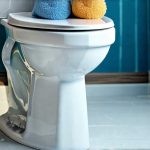Living with bladder issues—whether occasional urgency, frequent trips to the bathroom, or more complex conditions like incontinence—can significantly impact daily life. It’s not just about the physical discomfort; it’s often tied to feelings of embarrassment, anxiety, and limitations on social activities. Many people feel reluctant to discuss these concerns, leading to unnecessary suffering and isolation. This article aims to provide practical strategies and information for managing bladder issues, focusing on staying dry, comfortable, and maintaining a good quality of life. It’s about reclaiming control and navigating daily routines with confidence, even when faced with unpredictable bladder behavior.
Understanding that bladder health is often influenced by a variety of factors – lifestyle choices, underlying medical conditions, and even psychological stress – is the first step towards effective management. There’s no one-size-fits-all solution, and what works for one person may not work for another. This means exploring different approaches, adapting strategies to your specific needs, and seeking support when necessary. The goal isn’t necessarily elimination of symptoms (though that is possible in some cases), but rather effective management so they have less impact on your life. We will explore practical tips ranging from dietary adjustments and behavioral therapies to product choices and helpful resources.
Managing Your Bladder: Lifestyle & Habits
A proactive approach to bladder health begins with mindful lifestyle adjustments. Many seemingly small changes can collectively make a significant difference in managing symptoms and improving comfort levels. It’s about creating habits that support your bladder, rather than exacerbate problems. Consider this a holistic strategy – one that doesn’t just address the symptom but also considers the underlying causes or contributing factors.
One of the most impactful things you can do is modify your fluid intake. While staying hydrated is vital for overall health, timing and types of fluids matter greatly. Avoid large quantities of liquid at once, instead opting to sip water throughout the day. Limit consumption of bladder irritants like caffeine, alcohol, carbonated drinks, and artificial sweeteners. These substances can stimulate the bladder and increase urgency or frequency. Pay attention to how your body reacts to different beverages – what triggers symptoms for one person may not affect another.
Furthermore, establishing a regular voiding schedule – often called “timed voiding” – can be incredibly helpful. This involves going to the bathroom at set intervals, even if you don’t feel an urgent need to go. Gradually increasing the time between voids can help retrain your bladder and increase its capacity. Don’t hesitate to use a bladder diary for a few days or weeks; tracking when you drink, when you void, and any associated symptoms provides valuable information about your individual patterns and triggers. This data is also helpful when discussing concerns with healthcare professionals.
Staying Dry on the Go: Absorbent Products & Clothing Choices
When dealing with occasional accidents or managing incontinence, having reliable absorbent products can provide peace of mind and allow you to participate in daily activities without constant worry. The market offers a wide range of options beyond traditional pads, including disposable underwear, reusable cloth protectors, and specialized bedding covers. Choosing the right product depends on the level of leakage and your personal preferences.
- Consider absorbency levels: Products are rated based on how much fluid they can hold.
- Explore different styles: Briefs, liners, or protective underwear may suit different needs.
- Prioritize comfort and discretion: Look for breathable materials and designs that minimize bulkiness.
- Don’t be afraid to experiment: Try several brands and types to find what works best for you.
Clothing choices also play a crucial role in staying comfortable and confident. Darker colors and patterned fabrics can help conceal minor accidents, while loose-fitting clothing allows for better airflow and reduces friction. Avoid tight garments that might put pressure on the bladder or abdomen. Quick-drying materials are preferable as they minimize discomfort if an accident does occur. Layering your outfit can also be a smart strategy – it provides extra protection and offers more flexibility in case of a mishap.
Building Confidence & Seeking Support
Living with bladder issues can take a toll on mental health, leading to anxiety, depression, and social isolation. It’s essential to acknowledge these feelings and actively seek support. Don’t suffer in silence. Talking about your concerns with trusted friends, family members, or a therapist can provide emotional relief and help you develop coping strategies.
Many resources are available specifically for individuals managing bladder issues. Support groups offer a safe space to connect with others who understand what you’re going through, share experiences, and learn from each other. Online forums and communities provide similar benefits, allowing you to access information and support from the comfort of your home.
- Explore pelvic floor exercises: Strengthening these muscles can improve bladder control (consult a physical therapist for guidance).
- Consider behavioral therapies: Techniques like urge suppression and biofeedback can help manage urgency and frequency.
- Communicate openly with your healthcare provider: Discuss any concerns you have and work together to develop a management plan tailored to your needs. Remember, seeking professional help is a sign of strength, not weakness.
Navigating Daily Life & Travel
Managing bladder issues often requires some degree of planning, especially when traveling or participating in activities outside your usual routine. Before embarking on any trip, research the availability of restrooms along your route and at your destination. Carry a small emergency kit containing absorbent products, wet wipes, and a change of underwear.
- Pack extra clothing: Be prepared for unexpected accidents.
- Stay hydrated but mindful of fluid intake as discussed previously.
- Identify accessible restrooms: Use apps or websites that locate public facilities.
- Inform travel companions: Let them know about your condition so they can offer support if needed.
At home, make sure your bathroom is easily accessible and well-lit. Consider installing grab bars for added safety. Organize your absorbent products in a convenient location. Creating a comfortable and supportive environment at home can significantly reduce stress and anxiety related to bladder issues. It’s about making small adjustments that empower you to live life on your terms, without being constantly limited by your condition. Remember to prioritize self-care and focus on activities that bring you joy – staying dry and comfortable is important, but it’s only one aspect of a fulfilling life.





















